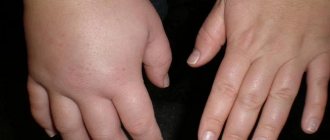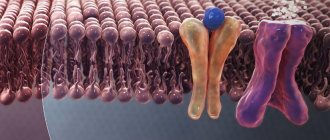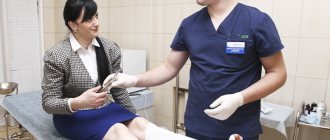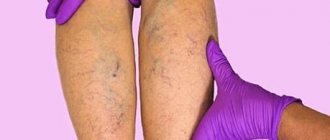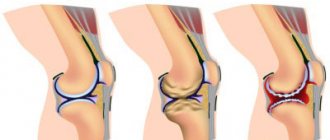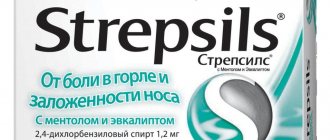How to treat lymphostasis of the lower extremities?
Lymphostasis of the lower extremities (lymphedema of the legs, lymphatic edema of the legs) is a disease of the lymphatic system, characterized by impaired lymph circulation and pathological retention of lymph in the tissues.
According to WHO statistics, lymphostasis is currently diagnosed in 10% of the population of our planet. The progression of this pathology to the development of elephantiasis causes physical and psychological suffering for the patient and almost always leads to disability. That is why the prevention and treatment of lymphostasis is currently receiving increased attention from phlebologists and lymphologists around the world.
What it is?
Lymphostasis is a lesion of the entire lymphatic system and a violation of the outflow of lymph. It simply stops circulating and accumulates in the tissues. This is why the legs swell a lot, and the skin becomes very dense over time. The problem does not go away on its own and develops into a more serious form, when a person can hardly move due to severe thickening of the legs.
This phenomenon is popularly called elephantiasis due to its external similarity to the limbs of this animal. Similar stagnation of lymph can develop on one leg or two, and can also affect the arms. From an aesthetic point of view, such a sight is very unpleasant, and it is quite difficult to hide it. On the Internet you can see photos showing examples of this disease.
Manifestations
There are quite a lot of symptoms of pathology. The first of these is significant swelling. Due to this:
- The limb becomes unnaturally shaped;
- The skin becomes stretched;
- The joints lose their former mobility;
- The skin of the extremities becomes rough and darkens, it resembles the peel of an orange.
The stages of pathology are assessed by the severity of its symptoms.
- Stage one - swelling appears in the afternoon and is the result, for example, of prolonged sitting or a large volume of fluid consumed;
- Stage two – swelling appears more often, severe pain is felt, and there is a feeling of heaviness in the legs. If you press on the skin, which becomes rough and loses elasticity, a dent will appear for a while;
- The third stage - immobilization of the joints occurs, the shape of the limb changes, and signs of trophic ulcers appear.
Causes of lymphostasis
The development of lymphostasis can be caused by a number of factors, if excluded, the development of the pathological process can be prevented or lead to persistent regression.
Among the main ones are:
- amniotic constriction of blood vessels;
- heart pathologies;
- congenital pathologies of the lymphatic system;
- small diametric parameters of vascular lumens;
- tumors of various origins;
- inflammatory diseases of the skin of the legs;
- hypoalbuminemia (protein deficiency);
- chronic or acute venous insufficiency;
- fractures or dislocations;
- renal failure (stage of replacement therapy);
- removal of nodes of the lymphatic system;
- various parasitic infestations;
- surgery in the chest area (for example, mastectomy);
- prolonged immobilization.
The causes of the development of the disease may not have a direct connection with the lymphatic system, but indirectly have a pathological effect through adjacent organs or systems.
Symptoms of lymphostasis, photo
Each stage of lymphostasis of the lower extremities has its own symptoms (see photo).
There are three levels of development of pathology:
- Mild swelling (lymphedema). Swelling is regular, goes away in the morning, after rest, increases with physical activity. The connective tissues do not grow, the skin is pale, easily palpable, and forms a fold upon palpation. In cold weather it may disappear completely. There are no irreversible changes at this stage.
- Irreversible swelling (fibridema). The swelling does not go away, pain appears, the skin is tight, a trace of pressure remains on palpation, the legs get tired easily. At the site of the lesions, cramps occur, the skin does not fold, and the skin gradually darkens.
- Elephantiasis. The connective tissue under the skin grows greatly, the skin is bluish, rough, and stretched. The swelling hurts a lot, the leg resembles an elephant’s limb, thickening more and more. Ulcers, necrotic processes, and inflammation appear. The limb gradually becomes more and more deformed, the joints do not bend.
Lymphostasis of the legs can develop primarily or secondary. Primary lymphedema is characterized by malfunctions of the lymphatic system caused by congenital malformations of the lymphatic tract and affects either one or both limbs. Primary manifestations of lymphostasis appear in childhood and progress in the future.
Secondary lymphostasis develops as a result of injury to the legs or the development of acquired diseases of the initially correctly formed lymphatic system.
Stages of lymphedema
Stage 0 – lymphatic vessels are damaged, but there is no swelling yet due to the body’s compensatory mechanisms
Stage 1 – transient mild swelling that occurs gradually throughout the day. When pressed with a finger, a hole is formed
Stage 2 – the skin begins to thicken (fibrosis), it is not always possible to make a dimple in the skin, the swelling is significant and dense, does not go away after rest
Stage 3 – severe swelling and skin changes
(Clinical classification of lymphedema, International Society of Lymphology)
Diagnostics
When determining therapeutic tactics, it is advisable to conduct an extensive examination of the patient, which includes:
- The most reliable method for diagnosing lymph transport disorders in the lower extremities is MRI (magnetic resonance imaging);
- Ultrasound (ultrasound examination) of the pelvic organs and the entire abdominal cavity;
- Duplex scanning of blood vessels of the arms and legs;
- Ultrasound of the heart, ECG;
- BAC (biochemical blood test) with mandatory determination of proteins and liver enzymes (AlT, AsT);
- X-ray examination (lymphography);
- Radioisotope diagnostics (lymphoscintigraphy);
- UMC (general urinalysis).
Most likely, all these diagnostic measures will not only indicate the development of lymphatic edema, but will also find the cause of these disorders.
Treatment of lymphostasis of the lower extremities
All conservative treatment methods are used only at the first stage of the disease, when structural changes in the connective tissue and skin have not yet begun. How lymphostasis will be treated directly depends on what caused it. First of all, the etiological factor must be eliminated (for example, if there is a pelvic tumor that compresses the lymph vessels, its removal is required).
Basic recommendations for patients with this pathology:
- cut nails carefully and promptly;
- When performing a massage, do not resort to kneading techniques;
- you should not wear shoes with laces or heels (heels increase the load on the legs and thereby impair lymph flow, and lacing can tighten soft blood vessels and tissues, which will also affect the development of this disease);
- It is strictly forbidden to visit a sauna, bathhouse or sunbathe (heat exposure dilates blood vessels, including lymphatic ones, which negatively affects lymph and blood flow in the lower extremities);
- treat the slightest skin damage (including insect bites) with antiseptic solutions;
- avoid static loads and heavy lifting (prolonged sitting or standing);
- you can’t sit cross-legged, which, by the way, is every woman’s favorite position, because this way you impede blood and lymph flow in the pelvic organs and legs;
- give up tight-fitting clothes and tight underwear (first of all, they compress the lymph nodes, and skin friction leads to trophic disorders);
- use special oils when taking a bath, and after water procedures, be sure to wipe the skin of your feet with lotions and creams without preservatives and fragrances, which will not only protect it, but also soften it, having a positive effect on the protective barrier;
- it is forbidden to walk barefoot outside the house (there is a high probability that the skin of the feet will be damaged and ulcers will form that will not heal well);
- use powder (baby powder, talc) for severe sweating of the feet, which reduces the risk of developing trophic disorders and sweating).
Treatment of lymphedema at home should be comprehensive, including medication and compression therapy, special massage, careful foot care, diet, sports and therapeutic exercises.
- The diet for lymphostasis should be low-calorie and practically salt-free, since salt, which retains fluid in the body, only contributes to the progression of edema. The food of patients with lymphostasis should be rich in plant and animal proteins, polyunsaturated fatty acids. You should limit your consumption of sweets, baked goods, pasta, and some types of cereals. But the consumption of fresh fruits, vegetables and dairy products is only welcome.
- Drug treatment consists of taking tablets. Taking troxevasin, detralex and venoruton forte tablets will help normalize lymph circulation. To improve peripheral blood circulation, no-shpu and teonicol are prescribed. The medicine trental will help restore blood microcirculation.
- For lymphostasis, sessions of lymphatic drainage massage are required, combining deep massage of the lymph nodes with rhythmic and gentle stroking of the outer skin. After the massage, which lasts about an hour, it is recommended to apply a therapeutic bandage.
- Compression therapy comes down to wearing special compression garments with distributed pressure or regular bandaging of the affected limbs. For dressings, you can use an elastic bandage or special products made from medical knitwear. By promoting lymphatic drainage, these measures help to significantly reduce swelling.
- Patients with lymphostasis benefit from physical therapy sessions, swimming and Nordic walking.
Drugs for lymphostasis
It is worth noting that drug treatment for lymphostasis of the legs contains a wide range of drugs that normalize lymph and blood flow, reduce the permeability of the walls of blood vessels, and also help increase their elasticity:
- diuretics - prescribed with caution under the supervision of a physician;
- antiplatelet agents (thin the blood) - trental, chimes;
- enzyme preparations (wobenzym, phlogenzyme) - stimulate the immune system, fight swelling, have an anti-inflammatory and fibrinolytic effect;
- phlebotropic agents (detralex, troxevasin and troxerutin gel) – improve tissue microcirculation, increase vein tone, restore lymph flow;
- homeopathic remedy - lymphomiazot, which stimulates metabolism, improves lymphatic drainage and enhances the removal of toxins from the body;
- benzopyrones (coumarin) – reduce high-protein edema, thin the blood, activate proteolysis by activating macrophages; Calcium dobesilate, which is similar in action to benzopyrones, is also prescribed;
- angioprotectors (medicines from horse chestnut extract) – normalize the tone of lymphatic vessels and veins, reduce the permeability of the vascular wall, which reduces the intensity of edema (escusan, venitan, aescin);
- solcoseryl - reduces tissue swelling, has a regenerative effect, increases the tone of the vascular wall (stimulates the formation of collagen in the walls of blood vessels);
- antihistamines - recommended for relapses of erysipelas and suppress the inhibitory effect of histamine on the contractile activity of lymph vessels (see all antihistamines);
- immunomodulators (succinic acid, tincture of Eleutherococcus, lycopid) – stimulate the immune system, strengthen the vascular wall;
- antibiotics and anti-inflammatory drugs for trophic skin disorders (ulcers, eczema, erysipelas);
- vitamins (ascorbic acid, vitamin E, PP, P) – strengthen the vascular wall, reduce vascular permeability, and have an antioxidant effect.
How does the lymphatic system work?
There are many lymphatic capillaries in all human organs and tissues.
They are closed at one end and unite into larger lymphatic vessels. As blood flows through small arteries, some of its liquid part, plasma, leaks into the tissues. Tissue fluid is partially absorbed into small veins and partially into lymphatic capillaries. Thus, it does not accumulate in tissues. All lymphatic vessels empty into lymph nodes. Here the lymph is filtered and cleared of foreign agents. Lymphocytes, the cells of the immune system, are formed in the lymph nodes. Usually many small afferent vessels flow into the lymph node, and only 1-2 efferent vessels exit.
Lymphatic vessels unite into larger ones and form two main ducts: the thoracic and right lymphatic. They flow into the right and left subclavian veins, respectively. Thus, the lymphatic system cleanses tissue fluid and returns it to the bloodstream.
Compression underwear
Medical knitwear is a salvation for patients with pathologies of the blood circulation and lymphatic system.
The products have a number of advantages:
- Functionality. Treatment of lymphedema is effectively carried out using medical knitwear. Stockings, socks, and sleeves not only delicately compress the affected, enlarged areas of lymphatic or blood vessels, but also provide support for the limb.
- Convenience. It is unlikely that everyone has the skills to bandage with an elastic bandage or the basics of lymphatic drainage massage. And anyone can wear compression hosiery (stockings, sleeves, knee socks).
- Beauty. Treating lymphedema and swelling can be fashionable and stylish. The knitwear is made in different colors and stylish designs. It can be worn instead of regular underwear under regular clothes.
It is necessary to choose therapeutic knitwear only according to individual standards. They are removed by a surgeon or medical consultant. For a positive effect against congestion, swelling, long-term use, wash your stockings or sleeves daily.
How to prevent lymphedema of the arm after mastectomy?
After the operation, the doctor will give you some recommendations:
- Avoid any damage or scratching of the arm on the side where the lymph nodes were removed. If an infection gets into the wound, it can cause lymph stagnation.
- Carefully monitor the condition of your fingers and nails.
- Wear rubber gloves when doing housework.
- Treat any wounds, scratches, or abrasions immediately with an antiseptic.
- Do not inject medications into this arm.
- Do not measure blood pressure on it. The cuff compresses the blood and lymphatic vessels, which can also cause lymphostasis.
- Try to use your hand more on the side of the removed lymph nodes so that it moves more. This will improve lymph flow.
- When sleeping, give your arm an elevated position, and during the day you can bandage it with an elastic bandage.
An effective means of preventing lymphostasis is lymphopressotherapy and gentle manual techniques. Make an appointment with a specialist at the ProfMedLab clinic +7 (495) 120-08-07
Massage
For lymphostasis, this is the basis of treatment. Hardware and manual effects on deep layers and large blood vessels are equally effective. You will not be able to massage your arm or leg yourself if there is swelling. The treatment of stagnation begins from the groin area or armpit area, which is physically difficult for the patient to do on his own. If you are prone to accumulation of lymph and interstitial fluid, or swelling, take a massage course from a specialist.
After the first session, after 1 hour, you will notice that the affected limb has decreased in size, and pleasant “goosebumps” and tingling may run through your body. This is a signal that stagnation of fluid and lymph, swelling is subsiding. During the session, the massage therapist wraps a ring of fingers around the arm or leg, slowly warms it up and works the deep layers of tissue. Lymphostasis of the lower extremities or arms can be treated with a massage brush or roller. And strengthen the blood vessels, and remove stagnation and swelling. Areas with large varicose nodes, trophic ulcers and other violations of the integrity of the skin are bypassed. If discomfort appears during the session, the session is stopped.
Signs and symptoms of lymphedema
- Swelling of the extremities, including the arms, hands, legs, feet. This may be the entire limb or just part of it. It can be one-sided or two-sided.
- Swelling proximally to the chest, shoulder, pelvis, groin, genitals, face/intraoral tissues.
- Pain and feeling of fullness, discomfort in the joints.
- Limbs may feel heavy and painful.
- Decreased mobility and range of motion of the affected limb.
- Change in sensitivity.
- Skin changes such as redness and fever.
- Hyperkeratosis (thickening of the skin) and lymphangiectasia (dilated superficial lymphatic vessels)
About the benefits of exercise therapy
In addition to massage, physical exercise is very important for lymphostasis of the lower extremities. They are included in the treatment of this disease. Of course, it is necessary to develop a special complex that needs to be done 2 times a day. You should devote only a quarter of an hour to classes. In this case, a compression bandage must be present on the sore leg.
What exercises can be included in the complex?
- Bicycle with a sore leg;
- Flexion and straightening of toes;
- Rotate your feet in different directions alternately;
- “Drawing” a figure of eight with your feet.
The exercises are very easy, but the important rule is to do them daily.
Treatment with folk remedies
At home, various folk remedies are used to treat lymphostasis (as an auxiliary medication and only in the initial stages). Without being able to describe them all, here are a few examples:
- Apple vinegar. It strengthens the walls of blood vessels, eliminates swelling and trophic changes. To grind, dilute vinegar with water in a ratio of 1:2. Rub with massage movements from feet to thighs. Then, after a short exposure, rinse off the remaining solution and apply a cream with a vascular strengthening effect to the skin.
- Compresses help a lot. For example, baked onions mixed with pharmaceutical tar. The onion is baked, ground until smooth and 2-3 spoons of tar are added. The finished mixture is laid out on a clean canvas cloth. The tissue is evenly distributed over the area of local swelling, fixed with a bandage and left until the morning.
- Dandelion root – the product enhances lymphatic drainage and tones the vascular wall. Use an infusion of dandelion leaves, taking 0.5 cups on an empty stomach three times a day. To prepare the infusion you will need 2 tbsp. spoons of dry dandelion leaves, they need to be filled with 0.5 liters in the evening. boiled water. Drink the finished infusion throughout the next day, and prepare a fresh portion in the evening. You can also use dandelion roots, but they should be boiled in a water bath for 5-8 minutes. in the same volume of water. Drink a glass of the prepared decoction in the morning before meals.
- Decoctions of medicinal herbs can be used in the form of night applications. For herbs, take St. John's wort, plantain, and yarrow. Add 25 ml of medical alcohol, an aspirin tablet and an ampiox tablet to the prepared solution. I soak gauze with the composition and apply it to the affected area of skin, put a cloth soaked in a strong salt solution on top and securely fix it with a bandage, leaving it overnight.
- Natural herbs that have a diuretic effect have a therapeutic effect, helping to quickly eliminate swelling of the legs. Mix a collection of nettle leaves, birch buds and rose hips in equal parts and simmer in a water bath for 10-15 minutes. After filtering the infusion, drink half a glass three times a day 30 minutes before meals.
- Traditional medicine has not avoided the active use of leeches. For mild swelling, you can use 2-3 leeches per session. In more advanced cases, the number of leeches can be increased to 7-8 pieces. During the week you can do two treatment courses. Hirudin, contained in leeches, not only thins the blood perfectly, but also strengthens the vascular wall, reducing the effusion of fluid into the tissue and, as a result, significantly reduces swelling of the legs.
In addition, we should not forget about other recommendations from doctors to patients who are developing or experiencing similar problems. They will have to avoid baths, saunas, solariums, fragrances and preservatives in foot cosmetics, give up high-heeled shoes, tight clothes that rub the skin, avoid heavy lifting, long standing or sitting (especially with one leg crossed).
Causes of heavy legs
There are several reasons for swelling and heaviness in the legs.
It can be:
- diseases of the heart and blood vessels;
- excess weight, which puts more strain on the heart and puts pressure on the legs;
- monotonous or sedentary work leading to venous stagnation;
- gender predisposition: women suffer from varicose veins more often. This occurs during pregnancy, hormonal imbalance or due to constant walking in high-heeled shoes.
Operation
The issue of surgical treatment is considered in cases of severe congenital pathology of the lymphatic system, lack of effect from conservative therapy, progression of lymphedema, soft tissue fibrosis, frequent episodes of erysipelas, etc.
Types of surgical intervention:
- Dermatofasciolipectomy using the island method – removal of altered areas of skin along with subcutaneous fat, fascia, and fibrosis. Preoperative preparation includes several liposuction sessions necessary to remove subcutaneous tissue. The surgical intervention consists of excision of certain areas of the skin with underlying tissues affected by fibrosis. The resulting wound surface is covered with preserved skin flaps or taken from a healthy area of the patient’s skin.
- Tunneling is the artificial creation of special channels in the affected areas for the outflow of accumulated lymph into healthy tissues with further absorption into the lymphatic vessels. Temporary tunnels are made from spiral-shaped drainages or special prostheses, permanent tunnels are made from a section of the saphenous vein or a spiral made of inert material. Indicated for advanced forms of lymphedema, which excludes the possibility of treatment with any of the above methods.
- Operation with the creation of lymphovenous anastomoses. Indicated for secondary lymphostasis, especially after radiation exposure to the lymph nodes or after their removal during mastectomy. It is ineffective for the treatment of primary lymphostasis. The intervention consists of isolating the vessels of the lymphatic bed and connecting them with a nearby vein using the finest microanastomoses.
- Liposuction is the surgical aspiration removal of subcutaneous tissue that has undergone fibrotic changes. It is performed in the presence of moderate limited fibrosis.
After any type of surgical intervention, drug treatment is prescribed. Every patient with lymphostasis, regardless of the stage of the process, is observed by an angiosurgeon. Courses of maintenance therapy in most cases are carried out throughout the patient’s life.
Diet
Depending on the cause of leg lymphostasis, the doctor prepares a diet. The basic nutritional rules for patients with lymphostasis are:
- avoiding alcohol and caffeinated drinks;
- exclusion of products containing dyes, artificial fillers and flavor enhancers;
- reducing salt intake;
- exclusion of products with excess animal fat content;
- preference is given to foods rich in proteins and fiber;
- maintaining water balance;
- fractional meals: small portions, but often.
Prevention
To prevent lymphostasis of the lower extremities, it is recommended to follow the following rules:
- wear compression garments;
- visit the pool regularly;
- give up uncomfortable shoes;
- drink at least two liters of clean water daily;
- take half-hour walks and bike rides every day;
- care for the skin of the feet: cutting nails, removing dead skin, treating wounds, treating insect bites with antiseptics or boric acid - everything should be done in a timely manner.
Stagnation in tissues and impaired outflow of lymphatic fluid will provoke the appearance of other serious diseases and limit movement. How to prevent the development of pathology? If lymphostasis of the lower extremities has already been diagnosed, treatment at home will help you quickly cope. The system of influencing risk factors should not be neglected in patients with a genetic predisposition or in remission.
